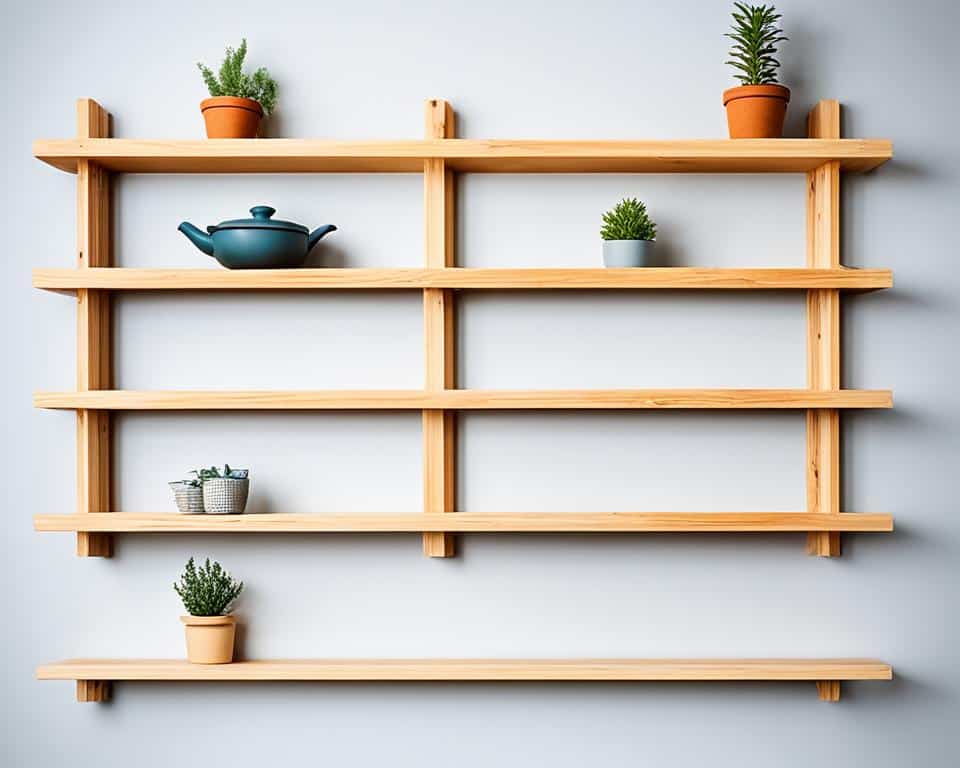When it comes to building shelves, choosing the right type of wood is essential. Pine is a popular option for shelving due to its affordability, wide availability, and unique characteristics.
If you’re wondering whether pine is a good choice for your shelving needs, read on to discover the benefits of pine shelving and considerations to keep in mind.
Pine wood is known for its light color, straight grain, and charming knots that add character to the wood.
It’s a lightweight and easy-to-work-with material, making it ideal for DIY projects. Furthermore, pine can be easily stained or painted to match any decor style, offering flexibility in design.
However, it’s important to note that pine is considered a softwood, which means it may not be as durable as hardwood options.
It can be susceptible to dents and scratches and may require extra support for long spans. Despite these considerations, with appropriate usage and proper maintenance, pine can still be a good choice for shelves.
Next, let’s explore the advantages of pine shelving and how to ensure its longevity.
Advantages of Pine Shelving
Pine shelving offers several advantages that make it a top choice for many projects.
Firstly, pine is known for being relatively inexpensive compared to other types of wood, making it a budget-friendly option for those looking to create shelving solutions.
With its widespread availability at most hardware centers, finding pine boards for your shelves is a breeze.
One of the standout features of pine is its lightweight nature. This makes handling and installing pine shelves much easier compared to heavier wood options.
As a result, DIY enthusiasts particularly appreciate working with pine due to its versatility.
Pine boards can be easily cut, shaped, and assembled, allowing for endless possibilities when designing and customizing your shelves to fit your specific needs.
While pine may not have the same durability as some hardwoods, it can still offer a long-lasting solution if properly maintained.
Regular cleaning to remove dust and grime, as well as protecting pine shelves from excessive weight, can help prevent sagging and damage.
Additionally, using appropriate support such as brackets or reinforcing the shelves can provide the necessary stability and minimize the risk of any structural issues.
By following these maintenance tips, your pine shelves can remain functional and visually appealing for years to come.
When comparing pine to other wood options for shelves, it’s important to assess your specific needs and preferences.
While pine might not be as resilient as certain hardwoods, its affordability and ease of maintenance make it an appealing choice for many.
Whether you’re looking to showcase your book collection, display decorative items, or organize your pantry, pine shelving can provide a versatile and cost-effective solution.

Considerations When Using Pine for Shelves
Before choosing pine for your shelves, it’s essential to understand its characteristics and limitations.
Pine is classified as a softwood, which means it may be more susceptible to dents and scratches when compared to hardwood options. It’s important to take this into account if your shelves will be subjected to heavy loads or long spans.
Additional support may be needed to ensure the stability and durability of your pine shelves.
Nevertheless, pine’s natural characteristics can also work in its favor. The light color and knots present in pine wood can add a touch of warmth and character to any space.
Furthermore, one of the significant advantages of pine shelving is its affordability compared to hardwoods. This makes pine a cost-effective choice for those with budget constraints who still want high-quality shelving.
To ensure the best results with pine shelves, it’s crucial to select high-quality pine boards that are free from knots and are well-graded for a smooth finish.
When considering pine for shelves, keep in mind the importance of proper maintenance. Applying a clear topcoat finish can help protect the wood from damage and extend its lifespan.
In conclusion, while pine has its limitations, it can still be a viable choice for shelves when its characteristics and maintenance requirements are taken into account.
With the right care, pine shelving can offer both functionality and aesthetic appeal to your living or working space.
FAQ
Is Pine A Good Choice For Shelves?
Yes, pine is a popular choice for shelves due to its affordability, wide availability, and unique characteristics.
What Are The Benefits Of Pine Shelving?
Pine shelving is relatively inexpensive, lightweight, easy to work with, and can be easily stained or painted to match any decor style.
How Durable Is Pine Shelving Compared To Other Woods?
Pine is considered a softwood, which means it may not be as durable as hardwood options. It can dent and scratch more easily and may require extra support for long spans.
How Should I Maintain Pine Shelves?
Regular cleaning, avoiding excessive weight, and using appropriate support can help prevent sagging and damage to pine shelves.
What Are The Advantages Of Pine Shelving?
Pine shelving is more affordable compared to hardwoods, widely available, lightweight, and easy to cut, shape, and assemble.
What Are Some Considerations When Using Pine For Shelves?
When using pine for shelves, it is important to consider that it is a softwood and may be prone to dents and scratches. It may require additional support for heavy loads or long spans without sagging.
Choosing high-quality pine boards and applying a clear topcoat finish can help protect the wood and prolong its lifespan.

